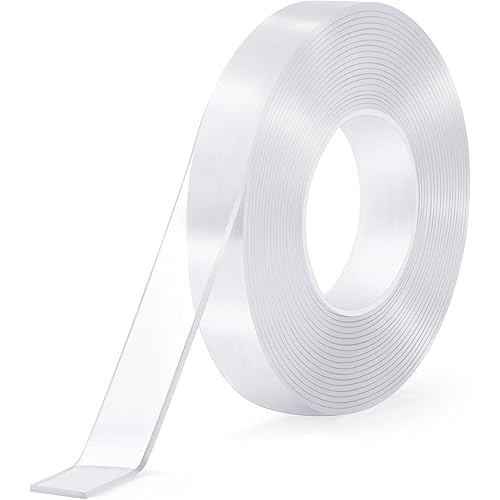







Buy Now, Pay Later
- – Up to 36-month term if approved
- – No impact on credit
- – Instant approval decision
- – Secure and straightforward checkout
Ready to go? Add this product to your cart and select a plan during checkout.
Payment plans are offered through our trusted finance partners Klarna, Affirm, Afterpay, Apple Pay, and PayTomorrow. No-credit-needed leasing options through Acima may also be available at checkout.
Learn more about financing & leasing here.
Selected Option
Eligible for Return, Refund or Replacement within 30 days of receipt
To qualify for a full refund, items must be returned in their original, unused condition. If an item is returned in a used, damaged, or materially different state, you may be granted a partial refund.
To initiate a return, please visit our Returns Center.
View our full returns policy here.
Recently Viewed
Style: Body Only
Set: Base
Features
- 20.2MP full frame CMOS sensor
- 4.5 frames per second continuous shooting
- 1080p HD video recording with manual controls
- 11-point AF system
- 3 inch LCD with 1,040,000 dots.Lens Mount:Canon EF mount
Description
The compact and lightweight EOS 6D full-frame digital SLR camera features a 20.2 Megapixel Full-Frame CMOS sensor, a wide ISO range of 100–25600, expandable to L: 50, H1: 51200, and H2: 102400, for incredible image quality even in low light, and a DIGIC 5+ Image Processor. The camera also has a new 11-point AF including a high-precision center cross-type AF point with EV -3 sensitivity, continuous shooting up to 4.5 fps, and Full HD video with manual exposure control, multiple frame rates, and the benefits of a Full-Frame sensor provides stunning performance and creative flexibility. The built-in Wi-Fi transmitter allows you to wirelessly transfer your images to social networking sites through CANON iMAGE GATEWAY, or upload virtually anywhere from your iOS or Android smartphone with the free download of the EOS Remote app.
Compatible Mountings: Canon EF
Aspect Ratio: 32
Photo Sensor Technology: CMOS
Supported File Format: JPEG (Exif 2.3), RAW RAW (5472 x 3648), M RAW (4104 x 2736), S RAW (2736 x 1824) (14bit, Canon original RAW 2nd edition) See more
Image Stabilization: No
Maximum Focal Length: 105 Millimeters
Optical Zoom: 4.3 x
Maximum Aperture: 4 Millimeters
Expanded ISO Minimum: 50
Metering Description: Multi, Center-weighted, Spot, Partial
Auto Focus Technology: Phase Detection, Selective single-point, Multi-area, Single, Contrast Detection
Aspect Ratio: 32
Display Resolution Maximum: 1040000
Photo Sensor Size: Full Frame (35mm)
Photo Sensor Technology: CMOS
Effective Still Resolution: 20.2 MP
Maximum Webcam Image Resolution: 20.6 MP
White balance settings: Auto
Self Timer Duration: 2 seconds, 10 seconds
JPEG quality level: Basic
Camera Flash: Hotshoe
Image Stabilization: No
Flash Modes Description: eTTL
Flash Sync Speed: 1/180 sec
Supported Image Format: JPEG
Video Capture Format: MPEG-4
Video Capture Resolution: FHD 1080p
Video Standard: MPEG 4
Video Output Interface: NTSC
Batteries Required?: Yes
Number of Batteries: Lithium Metal batteries required. (included)
Are Batteries Included: Yes
Rechargeable Battery Included: No
Battery Cell Composition: Lithium Ion
Battery Description: Lithium Ion
Battery Weight: 77 Grams
Battery Life: 1090 Photos
Target Gender: Unisex
Connectivity Technology: USB, HDMI
Continuous Shooting Speed: 4.5
Wireless Communication Technology: yes
Flash Memory Type: SD/SDHC/SDXC
Memory Slots Available: 1
Special Feature: Face Detection
Skill Level: Professional
Form Factor: Mid-size SLR
Hardware Interface: AV Port
GPS: Built-In
Item Dimensions LxWxH: 5.71 x 2.8 x 4.37 inches
Item Weight: 27.16 Ounces
Lens Type: Macro
Optical Zoom: 4.3 x
Digital Zoom: 0.71 x
Maximum Aperture: 4 Millimeters
Minimum Aperture: 22
Zoom Type: Digital Zoom
Autofocus Points: 11
Compatible Mountings: Canon EF
Focus Type: Manual Focus
Maximum Focal Length: 105 Millimeters
Expanded ISO Maximum: 102400
Expanded ISO Minimum: 50
Max Shutter Speed: 1/4000 seconds
Min Shutter Speed: 30 seconds
Exposure Control Type: Manual
Metering Description: Multi, Center-weighted, Spot, Partial
Shooting Modes: Scene Intelligent Auto, creative auto, landscape, close-up, sports, special scene modes (night portrait, HDR backlight control), and more
Viewfinder Magnification: 0.71x
Viewfinder Type: Optical
Screen Size: 3 Inches
Display Type: LED
Display Fixture Type: Fixed
Warranty Type: 12
Mfg Warranty Description Labor: 1 year limited
Manufacturer Warranty Description Parts: 1 year limited
Model Name: Canon EOS 6D
Brand: Canon
Model Number: 8035B002
Number of Items: 1
Color: Black
Included Components: Battery Pack LP-E6, Eyecup Eb (Not Shown), Camera Cover R-F-3, Battery Charger LC-E6, EOS 6D Body
Lower Temperature Rating: 32 Degrees Fahrenheit
Upper Temperature Rating: 104 Degrees Fahrenheit
Assembly Required: No
Processor Description: Digic 5+
Frequently asked questions
To initiate a return, please visit our Returns Center.
View our full returns policy here.
- Klarna Financing
- Affirm Pay in 4
- Affirm Financing
- Afterpay Financing
- PayTomorrow Financing
- Financing through Apple Pay
Learn more about financing & leasing here.




















![Canon PowerShot Digital Camera [G7 X Mark II] with Wi-Fi & NFC, LCD Screen, and 1-inch Sensor - Black, 100-1066C001](https://m.media-amazon.com/images/I/81ap5aHOZdL._AC_US500_.jpg)



